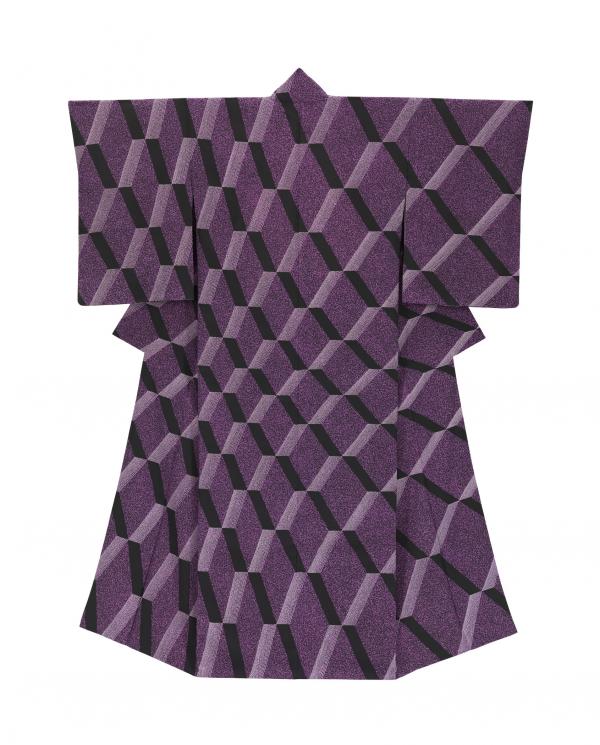Moriguchi Kunihiko was born in Kyoto in 1941, the second son of Moriguchi Kakō (1909–2008), a textile artist who specialized in a traditional freehand paste-resist dye technique known as yūzen. After studying Japanese-style painting (nihonga) at Japan’s oldest art university, the Kyoto University of Arts (Kyō̄to Shiritsu Bijutsu Daigaku, established 1880), Moriguchi became the first person from Japan to receive a scholarship to study in France from the French government. In 1963 he enrolled in the École Nationale Supérieure des Arts Décoratifs in Paris where he studied graphic design with Jean Widmer (b. 1929) and typography with Adrian Frutiger (1928–2015), and immersed himself in learning about architecture, design, and self-expression. French visual artists Annette Messager (b. 1943) and Philippe Weisbecker (b. 1942) are among Moriguchi’s classmates who have remained lifelong friends. During this period in France, he also became friends with art and literature critic and historian Gäetan Picon (1915–76), who introduced him to many artists, including Miró, Max Ernst, Chagall, and the Giacometti brothers; and the painter Balthus (Balthasar Klossowski de Rola, 1908–2001).
After graduating with a degree in graphic design, Moriguchi was seriously contemplating a job offer from a prestigious French graphic art studio. Balthus, who had met Moriguchi’s father in Kyoto and was in awe of his artistic achievements, counseled the young artist to return to Japan and join his father’s atelier. Moriguchi recalls that Balthus felt that no matter how great a design career he could have in Paris, it would never be as significant as becoming a yūzen kimono artist who could influence the continuation of the 300-year-old artistic heritage of yūzen through innovation and excellence. After a six-month stay at the Villa Medici in Rome where Balthus was serving as Director of the French Academy of Rome, Moriguchi returned to Kyoto at the end of 1966 and joined his father’s atelier the following year.
Living under the same roof as his parents’ household and his father’s atelier, Moriguchi began learning the time-consuming and technically challenging techniques of yūzen, applying them first to graphic art compositions on paper. Eventually, he devoted himself to creating yūzen designs on silk kimonos that were conceived as two-dimensional patterns as well as three-dimensional garments animated by women. During this period, father and son engaged in spirited artistic discussions that influenced their respective work.
In 1967, Moriguchi’s father was designated a Living National Treasure (Ningen kokuhō)—a title the Moriguchi Kunihiko eventually received in 2007—by the Japanese government for mastering the art of yūzen and revitalizing an age-old technique known as makinori (sprinkled crushed-rice-and-zinc-paste resist). In the same year, the younger Moriguchi found his own path, successfully completing his first yūzen kimono titled Hikari (Light), which was accepted in the 14th annual Japan Traditional Art and Crafts Exhibition (Nihon dentō kōgei ten). From Light in 1967 to Topological Mesh Pattern in 2020 and subsequent creations, Moriguchi’s kimonos with geometric patterns informed by Op Art, and inspired by the hidden order of the natural world, have been accepted into every annual Japan Traditional Art and Crafts Exhibition. In realizing his innovative designs of progressive gradations of an abstract geometric motif, Moriguchi’s use of limited colors combined with his father’s signature makinori technique often gives a sense of movement to the overall kimono design.
During our 37th annual Collectors Committee Weekend (April 21–22, 2023), members of LACMA's Collectors Committee generously helped the museum acquire 10 works of art spanning a breadth of eras and cultures. We'll be sharing information about these acquisitions throughout the week here on Unframed.



